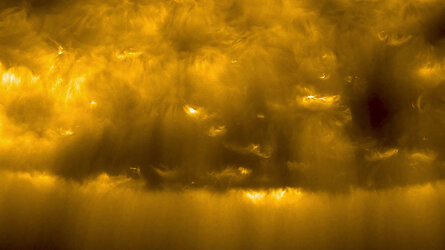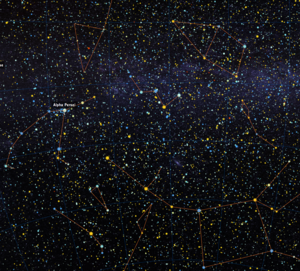Accept all cookies Accept only essential cookies See our Cookie Notice

About ESA
The European Space Agency (ESA) is Europe’s gateway to space. Its mission is to shape the development of Europe’s space capability and ensure that investment in space continues to deliver benefits to the citizens of Europe and the world.
Highlights
ESA - United space in Europe
This is ESA ESA facts Member States & Cooperating States Funding Director General Top management For Member State Delegations European vision European Space Policy ESA & EU Space Councils Responsibility & Sustainability Annual Report Calendar of meetings Corporate newsEstablishments & sites
ESA Headquarters ESA ESTEC ESA ESOC ESA ESRIN ESA EAC ESA ESAC Europe's Spaceport ESA ESEC ESA ECSAT Brussels Office Washington OfficeWorking with ESA
Business with ESA ESA Commercialisation Gateway Law at ESA Careers Cyber resilience at ESA IT at ESA Newsroom Partnerships Merchandising Licence Education Open Space Innovation Platform Integrity and Reporting Administrative Tribunal Health and SafetyMore about ESA
History ESA Historical Archives Exhibitions Publications Art & Culture ESA Merchandise Kids Diversity ESA Brand CentreLatest
Space in Member States
Find out more about space activities in our 23 Member States, and understand how ESA works together with their national agencies, institutions and organisations.
Science & Exploration
Exploring our Solar System and unlocking the secrets of the Universe
Go to topicAstronauts
Missions
Juice Euclid Webb Solar Orbiter BepiColombo Gaia ExoMars Cheops Exoplanet missions More missionsActivities
International Space Station Orion service module Gateway Concordia Caves & Pangaea BenefitsLatest
Space Safety
Protecting life and infrastructure on Earth and in orbit
Go to topicAsteroids
Asteroids and Planetary Defence Asteroid danger explained Flyeye telescope: asteroid detection Hera mission: asteroid deflection Near-Earth Object Coordination CentreSpace junk
About space debris Space debris by the numbers Space Environment Report In space refuelling, refurbishing and removingSafety from space
Clean Space ecodesign Zero Debris Technologies Space for Earth Supporting Sustainable DevelopmentSpace weather
Space weather and its hazards ESA Vigil: providing solar warning ESA Space Weather Service NetworkLatest
Applications
Using space to benefit citizens and meet future challenges on Earth
Go to topicObserving the Earth
Observing the Earth Future EO Copernicus Meteorology Space for our climate Satellite missionsCommercialisation
ESA Commercialisation Gateway Open Space Innovation Platform Business Incubation ESA Space SolutionsLatest
Enabling & Support
Making space accessible and developing the technologies for the future
Go to topicBuilding missions
Space Engineering and Technology Test centre Laboratories Concurrent Design Facility Preparing for the future Shaping the Future Discovery and Preparation Advanced Concepts TeamSpace transportation
Space Transportation Ariane Vega Space Rider Future space transportation Boost! Europe's Spaceport Launches from Europe's Spaceport from 2012Latest

Solar Orbiter’s highest resolution image of the Sun’s south pole
Thank you for liking
You have already liked this page, you can only like it once!
The Sun’s south pole as seen by the ESA/NASA Solar Orbiter spacecraft on 30 March 2022, just four days after the spacecraft passed its closest point yet to the Sun. These images were recorded by the Extreme Ultraviolet Imager (EUI) at a wavelength of 17 nanometers. Watch movie version here.
Many scientific secrets are thought to lie hidden at the solar poles. The magnetic fields that create the great but temporary active regions on the Sun get swept up to the poles before being swallowed back down into the Sun where they are thought to form the magnetic seeds for future solar activity.
The lighter areas of the image are mostly created by loops of magnetism that rise upwards from the solar interior. These are called closed magnetic field lines because particles find it hard to cross them, and become trapped, emitting the extreme ultraviolet radiation that EUI is specially designed to record.
The darker areas are regions where the Sun’s magnetic field lies open, and so the gasses can escape into space, creating the solar wind.
Starting in 2025, Solar Orbiter will use the gravitational pull of Venus to gradually crank up the inclination of its orbit. This will allow the spacecraft’s instruments to investigate the solar poles from a more top-down viewpoint.
The colour on this image has been artificially added because the original wavelength detected by the instrument is invisible to the human eye.
-
CREDIT
ESA & NASA/Solar Orbiter/EUI Team -
LICENCE
ESA Standard Licence

Solar Orbiter’s highest resolution image ever of the…

PHI sees mixed-up magnetism at the Sun's south pole

Why Solar Orbiter is angling towards the Sun's poles

PHI's pole-to-pole view of the Sun's magnetic field















 Germany
Germany
 Austria
Austria
 Belgium
Belgium
 Denmark
Denmark
 Spain
Spain
 Estonia
Estonia
 Finland
Finland
 France
France
 Greece
Greece
 Hungary
Hungary
 Ireland
Ireland
 Italy
Italy
 Luxembourg
Luxembourg
 Norway
Norway
 The Netherlands
The Netherlands
 Poland
Poland
 Portugal
Portugal
 Czechia
Czechia
 Romania
Romania
 United Kingdom
United Kingdom
 Slovenia
Slovenia
 Sweden
Sweden
 Switzerland
Switzerland























